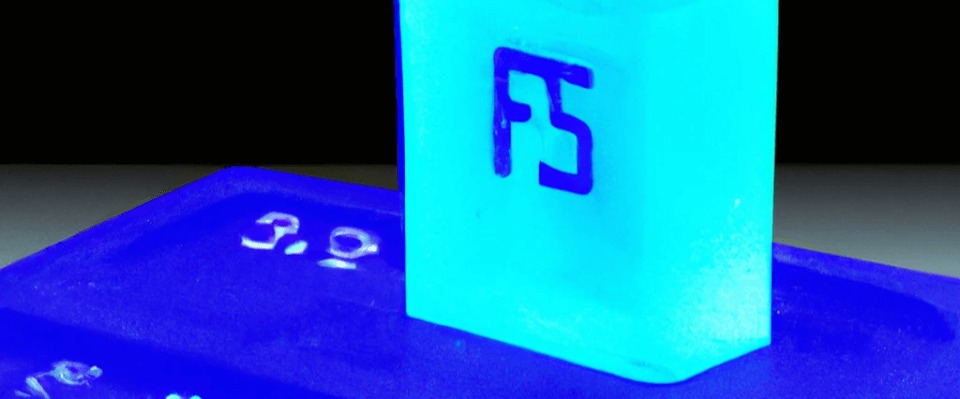Check out the 'battle' of 3D printing materials: ABS vs ASA. Find out who holds the crown for durability, UV resistance and environmental friendliness.

Today we present – ABS vs ASA . The dynamic world of 3D printing is constantly evolving and as a community of makers it is imperative that we stay abreast of the materials that are driving this revolution.
Our guide to ABS and ASA filaments in 3D printinga
In the ever-evolving landscape of 3D printing, the choice of printing materials can often be overwhelming. Today we delve into the features, applications, and nuances of two popular materials in the 3D printing industry: ABS and ASA. Whether you're a seasoned 3D printing professional or a beginner eager to learn, this guide serves to enlighten you on the ABS vs. ASA debate, providing you with the knowledge to make informed choices for your 3D printing projects. Let's dive into the topic!
ABS: The time-tested champion of 3D printing
Acrylonitrile Butadiene Styrene, also known as ABS , is a prominent player in the 3D printing materials market, favored for its strong and durable nature. Let's unravel the functions they do ABS majority choice:
- Durability and strength: From automotive parts to consumer goods, the strong resistance that ABS provides against physical impacts makes it ideal for countless 3D printing applications.
- Temperature resistance: A popular choice in the automotive industry, ABS boasts high temperature resistance, an essential property for components exposed to heat.
- Subsequent processing: Easy to sand and smooth with acetone, ABS allows 3D printing enthusiasts to achieve a polished, professional finish to their projects.
- Availability: ABS filament is readily available, available in a variety of colors to fuel your 3D printing creativity.

ASA: The new favorite in the 3D printing community
It's the center of attention Acrylic Styrene Acrylonitrile or ASA. Having similarities with ABS, ASA comes with its distinctive features that are rapidly gaining popularity among 3D printing enthusiasts worldwide:
- Resistance to ultraviolet rays: Ideal for outdoor applications, ASA resists yellowing and brittleness, maintaining its properties even under prolonged UV exposure, a quality sought after in outdoor drone and automotive applications.
- Mechanical resistance: ASA demonstrates commendable mechanical properties, ensuring reliable and functional prototypes and end-use products, a feature used in the manufacture of robust tools and fixtures.
- Better surface coverage: ASA promises less distortion and superior surface finish compared to ABS, offering aesthetic and functional advantages in 3D printed products.
- Ecological: With fewer volatile organic compounds (VOCs) emitted during the printing process, ASA stands as a greener alternative to ABS, in line with the growing shift to green manufacturing practices in the 3D printing industry.

ABS vs. ASA: Making an Informed Choice in 3D Printing
When it comes to choosing between ABS and ASA for your 3D printing endeavors, considering the specific requirements of your project is key:
- Outdoor applications Take advantage of the remarkable UV resistance of ASA for outdoor projects to ensure longevity and maintain quality over time.
- Prototyping Whether you're prototyping for automotive applications or building models for your next big invention, both ABS, as well ASA offer robust solutions to bring your ideas to life.
- Environmental sustainability For the environmentally conscious builder, the choice of ASA can be a step towards sustainable 3D printing, thanks to its lower VOC emissions.
Exclusively from 3MG Bonev Ltd.: Tips for Success with ASA Printing
To help you successfully navigate the ASA printing process, we've compiled a set of exclusive tips on 3MG Bonev Ltd.:
Print media
Provide a well-ventilated area for working with ASA, mitigating unpleasant fumes that may occur during the printing process and protecting your health.
Bed adhesion
Ensure excellent bed adhesion using high-quality solutions such as Magigoo or PEI sheets, preventing distortion and facilitating successful 3D printing.
Temperature settings
Optimize your temperature settings by keeping the nozzle between 230-260°C and the bed temperature around 90-110°C to ensure high quality ASA prints.
Subsequent processing
Enhance your ASA prints through post-processing; consider sanding or polishing with acetone to achieve a polished and professional finish.
Storage
Extend the life of your ASA wire by storing it in a cool, dry place, ideally accompanied by silica gel to prevent moisture absorption.
Conclusion
As we navigate the world of 3D printing materials, ABS and ASA emerge as two powerful contenders, each with a unique set of attributes to offer. Whether it's the proven reliability of ABS or the modern, eco-friendly approach of ASA, understanding the nuances of both can guide you in making informed choices in your 3D printing projects.
Feel prepared to embark on your 3D printing journey using the strengths of both ABS and ASA and take your 3D printing efforts to new heights.
0 Comments